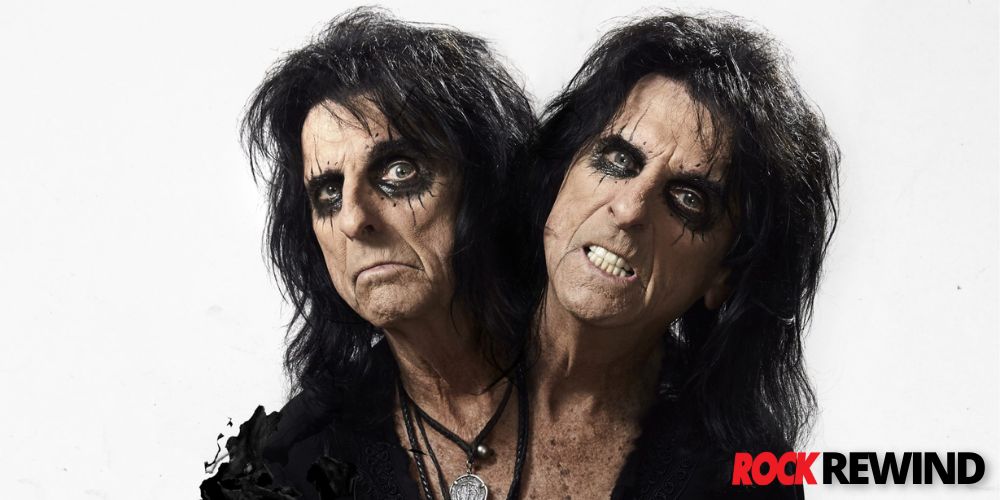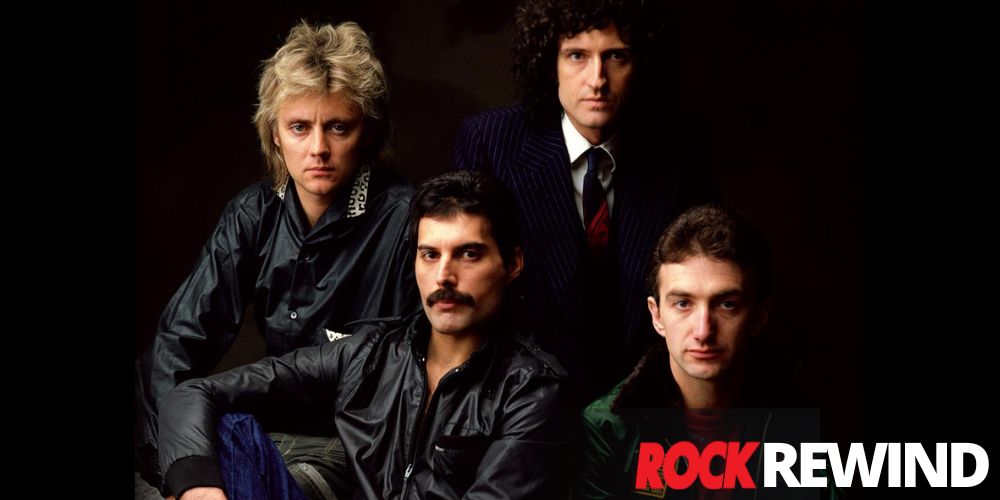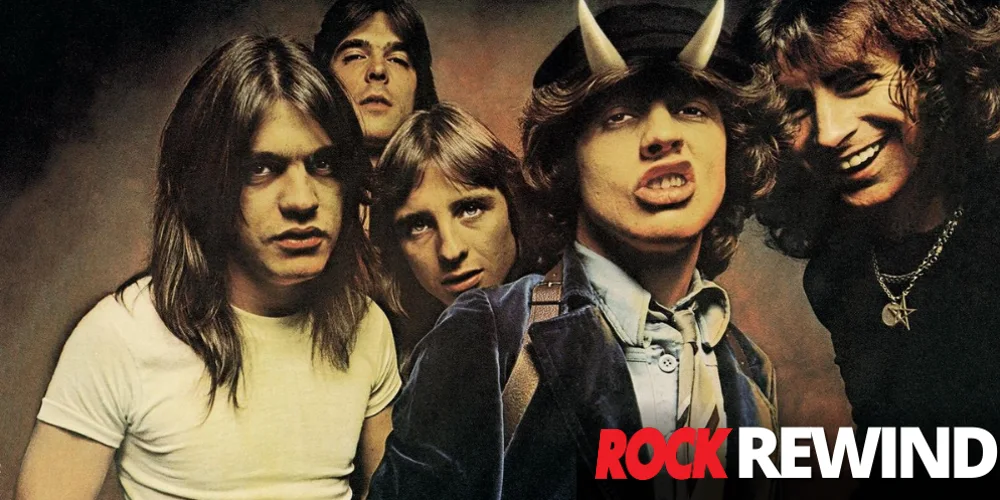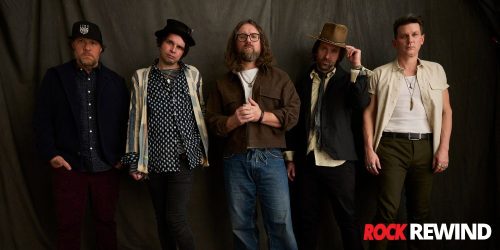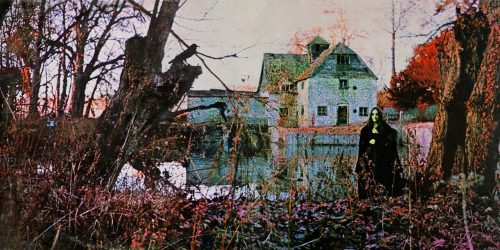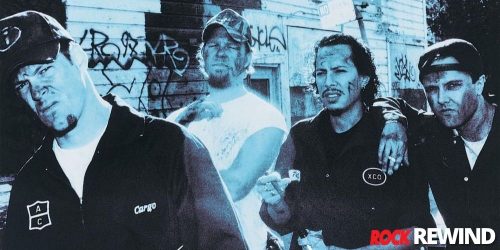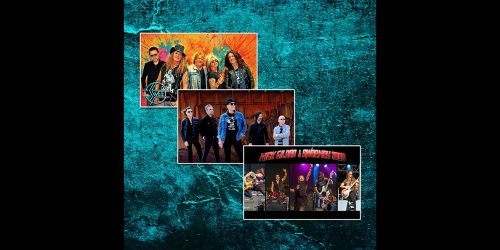Rock Rewind: The Timeless Influence Of Led Zeppelin
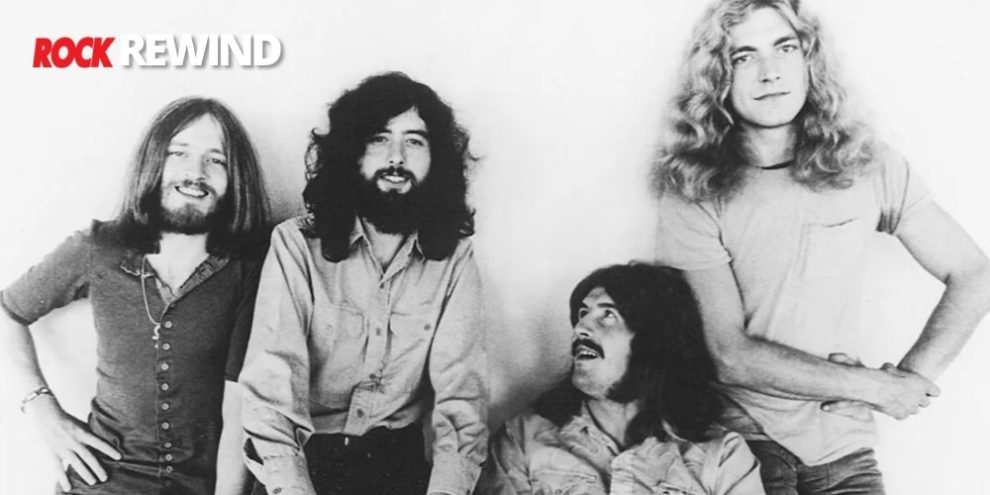
In the history of rock music, few bands have impacted the genre the way that Led Zeppelin has.
Earning top chart positions in their first year, their journey through the 1970s reshaped rock and left a lasting impression on music lovers all over the world. Even today, Led Zeppelin's music continues to connect with new generations, making them one of the most iconic rock bands.
With Robert Plant on vocals, Jimmy Page on guitar, John Paul Jones on bass and keyboards, and John Bonham on drums, the band mixed blues, folk, and hard rock sounds in a unique way. This blend of styles set them apart and laid the groundwork for a fresh era of rock music.
Where It All Began
Back in 1966, Jimmy Page joined the Yardbirds, a blues-based rock band. He was originally brought on to replace Paul Samwell-Smith on bass but soon began playing lead guitar alongside Jeff Beck.
When Beck left later that year, the quintet became a foursome.
- Jimmy Page on Lead Guitar
- Keith Reif on Vocals
- Jim McCarty on Drums
- Chris Dreja on Bass
Over the next two years, the group would perform songs on stage and in the studio that would eventually become part of Led Zeppelin’s repertoire.
Following a tour in 1968, the Reif and McCarty decided they wanted to chase new dreams. The two left the band and formed a folk duo called Together.
Authorised to continue using the Yardbirds names, Page and Dreja worked on putting together a new lineup. While Page originally wanted Terry Reid to take on lead vocals, Reid declined. He did, however, recommend Robert Plant.
Accepting the offer, Plant suggested John Bonham for drums, who he had played with in Band of Joy.
While working to rebuild the band, Chris Dreja dropped out of the project. John Paul Jones, who had worked with Page as a session musician, reached out about the vacant position and was brought on as the fourth and final member.
By August 1968, a new band was formed.
RELATED: Ranking 3 of Led Zeppelin's best songs ...
From The Yardbirds To Led Zepellin
Page, Plant, Bonham, and Jones played together for the first time in a room below a record store in London before heading to Scandinavia where they toured as the New Yardbirds.
“As soon as I heard John Bonham play, I knew this was going to be great ... We locked together as a team immediately."
— John Paul Jones
By September, the newfound group was working on their first album. Recorded and mixed in 9 days, the album was a compilation of songs based on their live set. Soon after the album was finished, Dreja sent a letter saying that Page was only allowed to use the New Yardbirds until they completed their Scandinavian tour. After that, they would have to change their name.
Where The Name Led Zeppelin Came From
One of the stories about how the band settled on Led Zeppelin starts with a supergroup that Page, along with the Yardbirds’ manager Peter Grant, wanted to start after the original members parted ways.
This new band would have consisted of Page and Beck on dueling guitars. Keith Moon (The Who) would take on drums, John Entwhistle (The Who) would be on bass, and Steve Winwood and Steve Marriott on vocals.
The supergroup never came to be. But while Page was planning it all out, Moon said that a band with Page and Beck would go down like a “lead balloon.” (Other stories say the phrase came from Entwistle). The phrase inspired Page but some adjustments had to be made.
Firstly, Peter Grant recommended that the band drop the “a” in “Lead.” He was worried that with the “a” people may pronounce it “leed” instead of “led”. The band also decided to replace “balloon” with “Zeppelin”
According to Page, Keith Moon came up with the name but not the way others recall. During an interview with Ultimate Guitar, he shared, “It was a name that Keith Moon had mentioned back then. He was talking, ‘Wouldn’t it be fun to have a band called Led Zeppelin?’ And I asked him if we could use the name because I was gonna be in this band Led Zeppelin with Keith Moon, so was Jeff Beck.”
Whatever the reason for the name change, the New Yardbirds became Led Zeppelin. And that’s when things really started to change.
A Quick Success
In October 1968, Led Zeppelin played their first show under their new name and recorded their first album.
Soon after, in November 1968, Atlantic Records signed Led Zeppelin sight unseen after. Singer Dusty Springfield recommended the group to the label.
The deal Led Zeppelin signed was for a $143,000 advance contract. It gave the band autonomy on release dates, tour dates, album content and design, singles, and promotion. To help manage publishing rights, Led Zeppelin started Superhype.
The new year brought two album releases, Led Zeppelin and Led Zeppelin II, both of which quickly climbed the charts. It also included multiple tours across the UK and the US, which would be just the start.
Over the next decade, Led Zeppelin would continue to release music and have a growing impact on rock music. Their concerts were legendary, characterized by the sheer energy and raw emotion they poured into each song. The combination of Page's guitar riffs, Jones's intricate basslines, and Bonham's thunderous drumming created an auditory experience that captivated audiences, leaving them in awe. More elaborate attire would begin to take over, with Page leading the way in glittering stage outfits. Their album covers became iconic. And their experiments with recording techniques pushed the limits of what could be done in the studio, inspiring many artists to explore new sounds.
It Wasn’t All Well And Good
Discussing Led Zeppelin's influence wouldn't be complete without mentioning the problems and criticism they faced. Allegations of bad behavior were part of their fame.
They built a reputation on trashing hotels, though some say stories were exaggerated.
"[Led Zeppelin's] travels spawned many stories, but it was a myth that [they] were constantly engaged in acts of wanton destruction and lewd behaviour"
— Chris Welch, music journalist
During one of their stays in Los Angeles, John Bonham rode a motorcycle down the band’s rented-out floor at the Continental Hyatt House.
In Tokyo, they were banned from the Hilton for life after destroying a room. And, on July 23, 1977, Bonham along with some of the band’s support staff, were arrested after beating up one of promoter Bill Graham’s employees. During the show, the 11-year-old son of Zeppelin’s manager Peter Grant tried to rip a sign off the band’s dressing room.
A security guard confronted the son. According to Graham, the security guard told him he couldn’t have it in a polite manner. But Bonham says he saw the guard hit the 11-year-old while he was on stage. In retaliation, Grant, Bonham, and a man named John Bindon badly beat the employee while tour manager Richard Cole stood guard.
The case went on for over a year before being settled out of court.
More Trouble Times: Deaths And Break Ups
Just one week after Bonham and his support staff were arrested in 1977, Plant learned his son, Karac, had died of a stomach virus. Karac was only 5 years old.
BONUS FACT: “All My Love” and “I Believe” were written about Karac after he passed away. Plant explains that “[“All My Love”] was just paying tribute to the joy that he gave us as a family and, in a crazy way, still does occasionally.”
Upon hearing the news Led Zeppelin immediately stopped touring and cancelled all their remaining shows.
The band didn’t record another album until late 1978. In Through The Out Door was released in August 1979. The following year the band played a number of shows including two headline concerts at the Knebworth Music Festival. Then, in 1980, they did a short European tour.
It was on this tour that Bonham collapsed on stage in Nuremberg, Germany, and was rushed to the hospital. According to the band, they had all over-eaten, which had caused the collapse. But many suspected the truth had to do with Bonham’s excessive alcohol and drug problem.
Later that same year, the band had a tour scheduled in North America. It would be the first North American tour since 1977 and was scheduled to begin on October 17.
But a few days before the tour was to begin, more tragedy struck.
Bonham’s Death
On September 24, 1980, Rex King picked up Bonham to bring him to rehearsals. On the way to Bray Studios, Bonham asked to stop for breakfast. That morning’s breakfast consisted of a ham roll and 4 quadruple vodkas.
After arriving at the studios, Bonham continued to drink. The band rehearsed late into the evening before heading to the Old Mill House in Clewer, Windsor where Page was currently living.
The next day, at 1:45 pm, the band’s tour manager and Jones found Bonham dead in bed. The musician had died of asphyxiation from his own vomit. According to the corner, he had the equivalent of 40 vodka shots in his system.
The North American Tour was cancelled and the remaining members decided it was time to disband.
A press statement on December 4, signed "Led Zeppelin", read, “We wish it to be known that the loss of our dear friend, and the deep sense of undivided harmony felt by ourselves and our manager, have led us to decide that we could not continue as we were.”
After The Break-Up
In 1982, Coda was released. The compilation album included rejected tracks from the 12 years that Led Zeppelin played together.
It wouldn’t be until 1985 that the remaining members would reunite for the Live Aid concert on July 13. They played a brief set with Tony Thompson and Phil Collins on drums.
In 1988 Plant, Page, and Jones would come together again. This time they played the Atlantic Records 40th Anniversary concert with Bonham’s son on drums.
Both of these performances were disjointed. Page and Plant described the shows as “pretty shambolic,” an “atrocity,” “foul’” and “one big disappointment.”
During the early 90s, two box sets were released that contained all of Led Zeppelin’s known studio recordings and some live tracks. Page and Plant would also release an album after reuniting on an MTV Project. Jones was not made aware of this reunion, which created a rift between the surviving members. A rift that became more obvious when Jones said, “Thank you, my friends, for finally remembering my phone number,” during the band’s induction into the Rock and Roll Hall of Fame.
Page and Plant would go on to release one last album without Jones before dissolving their partnership due to disappointing sales.
Reuniting Once More
The trio reunited once more in 2007. With Bonham’s son on drums, the band performed at the Ahmet Ertegun Tribute Concert at the O2 Arena in London. The show had the highest demand for tickets for one concert with 20 million requests. This performance was much more successful than their other reunions.
There were talks of Page, Jones, and Bonham’s son working together on tours and new material but the project was abandoned. Plant at the time was busy with other projects. He recalls, “I told them I was busy and they'd simply have to wait … I would come around eventually, which they were fine with – at least to my knowledge. But it turns out they weren't. And what's even more disheartening, Jimmy used it against me."
From the time they disbanded to the 2010s, the members of Led Zeppelin took part in many other projects and releases a number of live albums, DVDs, remasters, and other works. They also released an official illustrated book in 2015, a photo collection in 2020, and a documentary called Becoming Led Zeppelin in 2021.
Led Zeppelin Discography
Since 1969, Led Zeppelin has put out:
4 live albums – The Song Remains The Same (1976), BBC Sessions (1997), How The West Was Won (2003), and Celebration Day (2012)
10 compilation albums – Coda (1982), Led Zeppelin Boxed Set (1990), Led Zeppelin Remasters (1990), Led Zeppelin Boxed Set 2 (1993), The Complete Studio Recordings (1993), Early Days: Best Of Led Zeppelin Volume One (1999), Latter Days: Best Of Led Zeppelin Volume Two (2000), Early Days And Latter Days (2002), Mothership (2007), and Definitive Collection (2008)
They’ve also released 8 studio albums …
1. Led Zeppelin (1969)
Without a record deal lined up, the first Led Zeppelin album was paid for by Jimmy Page and their manager, Peter Grant. The total cost was £1,782. Produced by Page and mixed by Page’s childhood friend Glyn Johns, the able was released on January 12, 1969, by Atlantic Records, who had signed the band without seeing them play in November 1968, a month after they finished recording.
The album cover showed the Hindenburg disaster, which was both a fitting and controversial choice, considering the inspiration behind the band’s name.
Frau Eva von Zeppelin, who was related to the man who invented the Zeppelin, even went so far as to threaten legal action against the band. Firstly due to the controversy surrounding the image and secondly for using the name Zeppelin. More specifically, she didn’t want the name used in Denmark.
But as the saying goes, any press is good press and this particular story only helped with Led Zeppelin’s image. Page was quoted saying, “We shall call ourselves the Nobs when we go to Copenhagen,” which is exactly what they did during their performance in Copenhagen in 1970.
Led Zeppelin, often called Led Zeppelin I reached #10 on the Billboard charts. Though critics were not thrilled by the album, it later became one of the most important albums in rock music.
2. Led Zeppelin II (1969)
With the band touring for most of 1968 and 1969, Led Zeppelin II was recorded in different studios across North America and the UK. The sense of urgency that came from recording songs in a few hours between shows is reflected in the music itself.
Eddie Kramer, who engineered the album while Page produced it, recalls how the famous mix in “Whole Lotta Love” came to be. He explains that it was “a combination of Jimmy and myself just flying around on a small console twiddling every knob known to man."
He later shared, “We cut some of the tracks in some of the most bizarre studios you can imagine ... but in the end, it sounded bloody marvellous ... there was one guy in charge and that was Mr. Page."
Upon its release it quickly soared to #1 in the UK and the US, making it an even greater success than their first.
As was the case with their first album and all to follow, Led Zeppelin wasn’t keen on releasing edited versions of tracks being released as singles. This wasn’t an issue for the UK where there were very few broadcasters playing rock music but the US was a different story.
Despite their opinions, edited versions of their songs were released in the US without their consent. One of these tracks was “Whole Lotta Love,” which reached #4 on the Billboard chart, furthering the band’s popularity.
Even still, the band regularly turned down television appearances, wanting their fans to see and hear them at live shows.
In retrospective reviews, Led Zeppelin II, has been called one of the most influential albums of all time.
3. Led Zeppelin III (1970)
In 1970, Page and Plant headed to a remote cottage in Wales, known as Bron-Yr-Aur, for a much-needed break. The cottage was well-known to Plant as it had been used as a holiday home by his family in the 1950s.
Page recalls staying at the cottage in an article in Uncut magazine. In it, Page shares, “Robert and I went to Bron-Yr-Aur in 1970. We'd been working solidly right up to that point. Even recordings were done on the road. We had this time off and Robert suggested the cottage. I certainly hadn't been to that area of Wales. So we took our guitars down there and played a few bits and pieces. This wonderful countryside, panoramic views, and having the guitars ... it was just an automatic thing to be playing. And we started writing.”
RELATED: New Led Zeppelin footage from 1970s show uncovered ...
BRON-YR-AUR EVOLVED LED ZEPPELIN'S SOUND
It was here that Plant and Page really got to know one another, which helped evolve the band’s sounds. Plant explains, “Actually living together at Bron-Yr-Aur, as opposed to occupying nearby hotel rooms, the songs took us into areas that changed the band.” Page continues, “and it established a standard of travelling for inspiration... which is the best thing a musician can do.”
The result of their time at the cottage was tracks that sounded more acoustic with influences of folk and Celtic. The band also decided to include more instruments than their music usually featured. But, unlike other bands at the time, Led Zeppelin was set on having all the music performed by their band members. As a result, Jones became quite the multi-instrumentalist, playing on keyboard, mandolin, synthesizers, and double bass in addition to his bass guitar.
The album was the most anticipated album of the 1970s. But there were some delays. Most of these were a result of the intricate cover design with holes in the outer cover showing glimpses of the inner sleeve.
Though the album’s change in sound initially received mixed reviews, it still became a commercial success. Led Zeppelin III peaked at #1 in both the UK and US.
Again the label released a US single from the album against the band’s wishes. This time, they released “Immigrant Song,” which made it to the top twenty.
4. Untitled (1971)
In 1971, Led Zeppelin released their fourth studio album. Tired of the press saying they were simply hype, the band wanted this album to have no title or information. The problem was, the record company wanted something on the cover. So it was decided that four symbols would adorn the cover – one for each of the four band members.
Referred to as Untitled, Led Zeppelin IV, and sometimes Four Symbols, Zoso, or Runes, the album became one of the best-selling albums in history and cemented Led Zeppelin’s status in the halls of rock n roll.
No singles were released but “Stairway to Heaven” become the most played and requested song on US radio during the 1970s.
Following the album's release, Led Zeppelin toured into early 1973 across the UK, Australia, North America, and Japan.
5. Houses Of The Holy (1973)
In March 1973, the band released their fifth studio album – Houses Of The Holy. Featuring synthesizers and a mellotron orchestra, the album continued with the experimentation that Led Zeppelin became known for.
While this album did have a name, the title of it and the band's name were left off the sleeve. Instead, the cover showed a controversial image of naked children climbing the Giant's Causeway in Northern Ireland.
Still, the album was a success. It topped charts across the globe and resulted in a North American tour that broke records. While the tour grossed $309,000, over half of the band’s money ($180,000) was stolen from a safe deposit box at the Drake Hotel before the last show.
In 1974, the band launched their own record label. The label was called Swan Song after an unreleased track of the same name. The logo is often found on Led Zeppelin memorabilia, such as t-shirts, and shows a winged human that is said to be either Apollo or Icarus. The label was used to promote their own albums but they also signed on artists like Bad Company and The Pretty Things but would close soon after the Led Zeppelin disbanded.
6. Physical Graffiti (1975)
Physical Graffiti was the band’s 6th studio release and featured multiple different styles including rock, hard rock, and folk. Recording originally started in 1973 but the band took a short hiatus partway through the process.
The press were told that Jones had taken ill but the truth was he was considering quitting. He was disillusioned by the group and tired of touring. Band manager Peter Grant asked him to reconsider and told him to take the rest of 1973 off to recuperate.
Recording resumed and by February 1974 the band had all the tracks they needed.
Like Led Zeppelin III, this album experienced release delays due to the cover. Created by Peter Corriston, the album’s die-cut design was hard to manufacture. As a result, the 1974 release date was pushed to February 24, 1975.
Upon its release, the double album was a huge success for Led Zeppelin both critically and commercially.
Consisting of 15 songs, the release of the album led to all of the band’s albums entering the top 200 charts simultaneously. The album itself reached #3 in the US and #1 in the UK.
The band followed up the release with another tour of North America and shows in the UK. This included 5 sold-out shows in Britain’s largest arena at that time – Earls Court Arena.
7. Presence (1976)
After performing at Earls Court in May of 1975, the band took a short holiday while planning their next tour of North America. Unfortunately, Plant and his wife were in a serious car accident in August of the same year and the tour was put on hold.
Plant headed to the Bailiwick of Jersey so he could recuperate. While he may have wanted to return home, he was unable to as the band members were tax exiles.
After some good rest and writing sessions, the band headed to California to record.
In March 1976, Led Zeppelin released Presence. The album went to #1 in the US and UK but received mixed reviews with music that moved away from the intricate arrangements of their previous albums. It was also the band’s lowest-selling album.
As Plant was still recovering from his accident, Led Zeppelin did not follow up with a tour. They did, however, release their concert film, The Song Remains The Same. The film included footage of 3 sold-out shows at Madison Square Garden from the Houses Of The Holy tour 3 years prior.
The film was not overly successful. The UK was especially uninterested since Zeppelin had stopped touring the year before as a result of their tax exile status.
8. In Through The Out Door (1979)
In 1977, the band was all healed up and back on the road for another North American Tour. During this tour, the band set a world record, playing to an audience of 76,229 at the Pontiac Silverdome in Michigan on April 30. This was the largest attendance for a single-act show at the time.
But this wasn’t the only headline from the tour. A few days before Led Zeppelin broke the attendance record, 70+ people were arrested. This was a result of 1,000 fans gate-crashing the event while others threw rocks and bottles at the doors of the Cincinnati Riverfront Coliseum.
On June 3, 1977, a riot broke out after the rain or shine concert was cancelled due to a severe thunderstorm. It was also during this tour that Bonham was arrested and Plant’s son passed away.
It wouldn’t be until November of the following year that the band would begin recording their next album.
Like past albums, In Through The Out Door featured new sounds that hadn’t yet been heard from Led Zeppelin. The album quickly rose to first position on both the US and UK charts and resulted in Zeppelin’s entire catalog reentering the charts before the year was over.
The End Of A Journey
In Through The Out Door would be Led Zeppelin’s final studio release. Two years later, following live shows and touring, Bonham passed away and the band broke up.
Still, Led Zeppelin’s impact on music was huge and still is today. Their ability to mix genres, their energetic shows, and their innovative studio work have secured their place in history. Though time has passed since their peak, Led Zeppelin's legacy endures, and their influence still shapes the changing world of rock music.
Read More Rock Rewinds
Snag Our Newsletter
Hit that button like you’re pressing play on your favourite track. get exclusive content, stories, and news.


